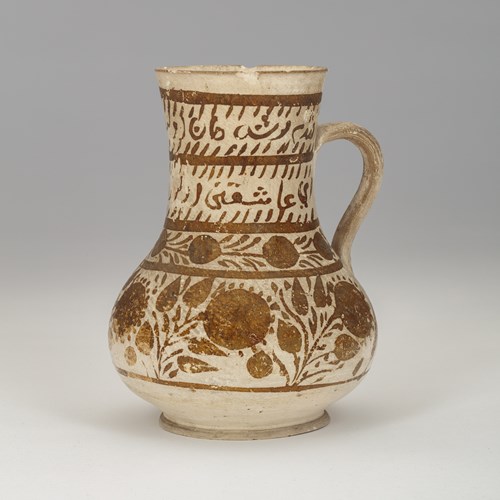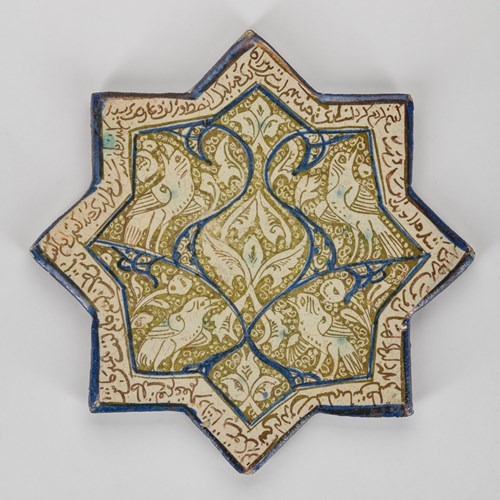Coverlet (The Five Senses)
Date First half of the 17th century
Period 1600-1750, 17th century
Origin India, Ahmedabad (Gujarat)
Medium Silk embroidery
Dimension 268 x 192 cm (105¹/₂ x 75⁵/₈ inches)
While the Portuguese were certainly the first to commission luxury goods such as prized silk textiles, directly to the centuries-old textile production centres of India, such as Bengal and Gujarat, other European patrons soon followed from the early 17th century onwards - on these Gujarati colchas see Karl, 2016, pp. 41-43; see also Peck, 2013. Apart from the present one, only five other examples of Gujarati coverlets embroidered with the Five Senses are known to have survived: one (273 x 193 cm) in the Museum of Fine Arts, Boston (Acc. No. 1998.587) and a second (284.5 x 218 cm), very similar in its composition and decoration, featuring facing phoenix-like simurgh of Persian origin on the four corners on the central field, in the Philadelphia Museum of Art (Acc. No. 1988-7-4, see Karl, 2016, pp. 257-58, Cat. No. 35); a third example in the Museu-Biblioteca Condes de Castro Guimarães, Cascais, Portugal; a fourth (278.7 x 197.3 cm), with winged lions and peacocks on the four corners of the inner central field, in the Art Institute of Chicago, Acc. No. 1982.18; and a fifth in the Kunstgewerbemuseum, Berlin. One other example, similar to these Five Senses' colchas in composition, colour scheme and decorative repertoire, albeit with the depiction of only one standing female figure with a parrot on the central medallion and double-headed eagles on the four outer corners, belongs to the Museo Nazionale del Bargello, Florence, Acc. No. Carrand 2258, see Karl, 2016, pp. 255-57, Cat. No. 34.
Stock no.: A4720
Date: First half of the 17th century
Period: 1600-1750, 17th century
Origin: India, Ahmedabad (Gujarat)
Medium: Silk embroidery
Dimension: 268 x 192 cm (105¹/₂ x 75⁵/₈ inches)
Provenance: Private USA Collection
Literature: Karl, B. Embroidered Histories: Indian Textiles for the Portuguese Market during the Sixteenth and Seventeenth Centuries, Böhlau Verlag, Wien - Köln – Weimar, 2016.
Peck, A. (ed.). Interwoven Globe: The Worldwide Textile Trade, 1500-1800 (exh. cat.), The Metropolitan Museum of Art, Thames and Hudson, New York - London, 2013.
More artworks from the Gallery


_T638207144083475395.jpg?width=2000&height=2000&mode=max&scale=both&qlt=90)

 Ionia_T638206163534868960.jpg?width=500&height=500&mode=pad&scale=both&qlt=90&format=jpg)




